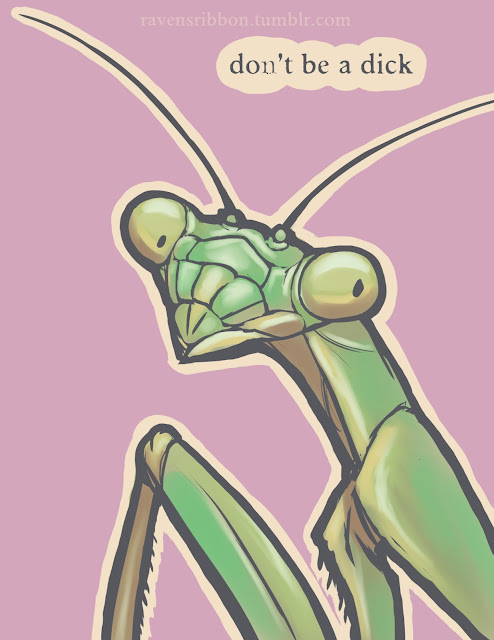--
 |
| This is a logo that was announced post-launch! |
Power Outage 1.4 is a large leap in a series I've been developing for the past 4 years. It's a Super Hero themed tabletop roleplaying game designed to be played by kids and GMed by adults. This would be the first attempt at making the book something I'm comfortable with being available in Print.
It's exciting to me for a ton of reasons aside from the fact that it's probably the largest and longest running creative endeavor that I've ever taken on. But I would have to say that the biggest excitement comes from the scope of change between 1.3 to 1.4. It's a monumental shift. There is a completely revised mechanic system, much greater resources for crafting your own adventures, and the biggest thing of all is the expansion of guidance to not only include differentiation, but also a focus on creating more accessible gaming tables. Plus its just the inherent potential of creating something that introduces a new generation to a hobby that I and many others love.
 |
| An example of the result of the Kickstarter funding on the character sheet. |
My work in Public Education as a technologist has me dealing with data often. Part of that involves creating considerations for Special Education, and managing Special Education Data. So when it comes to creating accomodations I realize the monumental task in front of me. As soon as I started I realized there was no end, so I'm tackling it from two fronts. In the book I have a section dedicated to Accessibility guidance. I broke the sections into 5 specific domains outside of general guidance. Physical, Communicative / Receptive, Behavioral, Cognitive, and Emotional. What I'm essentially doing is tackling the topic from a symptomatic approach, rather than a cause approach. Tthat limits me to an extent from the specificity inherent with conditions, but allows for the broadest spectrum of guidance. I have 2 directors of special education I've worked with helping to ensure that the information I'm providing is safe, sound, and that the terminology is effective.
Seperate from that I created a wiki called www.accessible-rpg.com It is currently under developed, and tailored primarily to children, but eventually I'd like it to become a free resource to people developing games or running tables, to create a more accessible gaming table. It's a larger goal than Power Outage itself, and its only going to be successful with community involvement. That's why it's built in the wiki format. It has to be populated with information from the people who are directly effected. It has to be live, and continually changing. I plan on jumping right back into it once I'm done with the kickstarter, and pulling in as much guidance as I can get.
As to why it's important to me, I could try to relate to work, or family members, or some forms of tangible relationships to be people I know that have disabilities, but in all honesty, it is something that we should ALL be working toward. Roleplaying games allow all of us to not only break free of the limitations we find in our every day lives, but express our real selves through our avatars. We bring our strengths and our perceived weaknesses and allow them to shape a world we actively create. The absolute NEED to make that process available to everyone is imperative. We need to be accessible. We need to be inclusive. We need to bring everyone to the table, and if we can't, then we need to drag that table over to them.
What are the mechanics like in Power Outage? How do you encounter and overcome challenges?
So we're working with kids. That takes "expectations" and throws them into the waste bin. So the idea behind Power Outage's mechanics is in compartmentalizing game play so that kids can be playing their own individualized game while still contributing to the greater narrative. It's taking the concept of differentiation from the classroom and applying it the gaming sphere.
What it boils down to is the idea that the game is more a guide then a hard set dogmatic codex that must be followed. GMs provided guidance to players based off of their capabilities, and to do this effectively, the mechanics have been made so that it's easily accessible to everyone involved.
Characters have 4 attributes. IMPACT - which effects basic human characteristics POWER - which effects their super heroic capabilities OHMER - which is the stat that IMPACT and POWER compare againsts and YP - Yield Points - which is the point pool that Heroes have before deciding them must Yield or regroup. There is no death in Power Outage.
The 4 attributes covers a lot of types of conditions, but is a reduced amount of record keeping so that not only are kids able to focus more on roleplay and story elements, but so that GMs can more easily manage groups of kids who for instance may not be able to read yet, or add large sums.
In order to allow creative freedom for kids to make the heroes they want, Power tables are provided with effects are provided and grouped to Combat, Support, and Utlity. Kids work with the GM to determine what their heroes can do, and the GM helps match the power to an effect on the table. So if you're doing 1d4 damage from up to 20 spaces away, it doesn't matter if that effect comes from a flame torch, or a snow ball, or lightning bolt or psychic shock. In short, Power Outage provides the effect, and the hero provides the flavor.
One last thing I'll mention is the CAPE system (Combat, Alternative, Puzzle, and Exploration) It's a way to compartmentalize adventures so that you can cherry pick what you want for your play sessions. In the prewritten adventures (to be released, although one is included with the core book) it becomes a choose your own adventure mechanic. Do you prefer to not have violence in your session, Alternative Components match up to every Combat Component. Are puzzles too difficult? Move around them directly to exploration. It allows GMs to build adventures that pertain to the needs of their group.
All of this comes from the game kids want to play, rather than the game kids are forced to play. And it happens at all levels. From something as simple as the character sheets "Character image" section being enlarged because kids want more room to drawing their characters, to color/symbol coding Attributes so that a GM can easily say "Tell me the red number" or "Tell me the number with the boot symbol"
The five regions for playing in sound really fun! What are they like to play in? What exciting elements do they have in store?
So not only are the 5 regions different stylistic settings, the settings themselves allow for potentially uniquely suited playstyles as well.
The Atomnyy Zavod is a always night gothic soviet atomic punk city. It's gritty, and confusing, and the some of the starker elements are only highlighted by the oddity of it's semi-futuristic elements. You'll see old-timey vehicles driving under nuclear battery powered street green glowing street lights. But this is the perfect setting for gritty noir mysteries. You'll use Exploration and Puzzle solving components just as often if not more often then Combat/Alternative.
Shorai City is it's opposite in many ways, with it's soaring Neo-Japanese inspired towers, flying cars, and robotic servants. This city has become a gathering point for many big heroes and villains, and often becomes the setting for large confrontations. This setting is great for large Beat Em Up style baddies that hearken back to the Golden Era comic days. Villains include Mrs. Roboto and The Tempuritan.
The Overgrowth is by far the most expansive region of Outage. The product of Outages once barren but strange landscape, had tests done on it in the early stages of American involvement causing the worlds largest forrest to grow. That forrest however was both invasive, aggressive, and sentient. Still outpost seem to coexist within the Overgrowth. A musical troll city, a city of Outcast Powers (the name for people with Powers in Outage), and a School for Sandwich Magic are just a few examples of what is discovered, but certainly more mysteries lie within under the canopy. This setting is great for all sorts of Campy Adventures or Mythical Fantasy type games. One area might hold dragons, and the other might hold dinosaurs. Ancient civilizations come to light or scientific outposts. Villains include Treestache and Swagneto.
The sink is a geological anomoly. It is a peninsula on the south eastern coast of Outage. One end appears to be sinking steadily in the ocean while the other side of it emerges from the ground far inland, seemingly with intact ancient structures. At it's tip, the sink features a floating shanty city of disreputable individuals known as The Scum. Under the ocean as the sink delves further into it's depths lie ancient cities under the water, sealed off from the ocean that surrounds it (for now). This is a great city for acting a bit rebellious enjoying some not so squeaky mission, confronting morale dilemmas, or just outright exploration. Whether you're in the muddy bayou, exploring submerged catacombs or getting into naval battles with or against pirates, it's usually a nonstop adventure. Villains of note include The Boat Rocker and InstaGator.
Finally, Seward's Refuge is central to the island continent. It is an American run scientific and military facility, that serves often as a waystation between regions, a central government, a barrier to the Overgrowth, and it's Space Elevator even provides access to the stars. This region is great for multi-region adventures, political intrigue, science gone wrong, or incursion/spy missions. Villains of note include Agent Orangutan and General Specific.
Each region has areas that aren't directly drawn out leaving exploration up to the imagination and creation of the GM. There is also a section in the book detailing potential other locations including Dimensional and Temporal options. It's a huge sandbox that kids and adults can play in. You can build just about any game you want to in the world.
With all of the efforts that you have put in, do you have any hopes moving forward for Power Outage and even other games to become more accessible for kids?
Yes, I think you'll see a lot more of this cropping up. There is a positive shift in the culture of gaming that not only lends to more voices being heard, but a general awareness of the roles we play in inclusiveness, accessibility, and security. A lot of people grew up with these games, and are looking to share it with their kids. In he end, getting families around the table and talking and gaming with each other was the seed that my game grew out of. And as we learn more and more how games effect the ability to understand and retain knowledge, to become flexible and willing to learn new things. It's becoming an imperative.
 |
| What a nifty cover! |
--
Thank you so much to Bebarce for the interview! I hope you all enjoyed it and that you'll check out Power Outage on Kickstarter today!
This post was supported by the community on patreon.com/briecs. Tell your friends!
To leave some cash in the tip jar, go to http://paypal.me/thoughty.
If you'd like to be interviewed for Thoughty, or have a project featured, email contactbriecs@gmail.com.


























